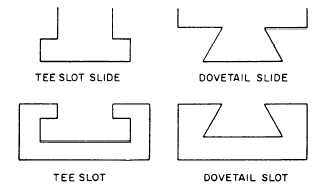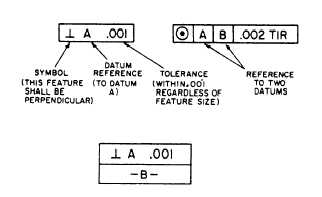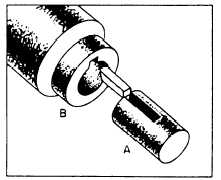point from which a geometric position is to be
determined or from which a distance is to be measured.
Any letter of the alphabet except I, O, and Q may be
used as a datum identifying symbol. A feature control
symbol is made of geometric symbols and tolerances.
Figure 4-3 shows how a feature control symbol may
include datum references.
Fillets and Rounds
Fillets are concave metal corner (inside) surfaces.
In a cast, a fillet normally increases the strength of a
metal corner because a rounded corner cools more
evenly than a sharp corner, thereby reducing the
possibility of a break. Rounds or radii are edges or
outside corners that have been rounded to prevent
chipping and to avoid sharp cutting edges. Figure 4-4
shows fillets and rounds.
Slots and Slides
Slots and slides are used to mate two specially
shaped pieces of material and securely hold them
together, yet allow them to move or slide. Figure 4-5
shows two types: the tee slot, and the dovetail slot. For
examples, a tee slot arrangement is used on a milling
machine table, and a dovetail is used on the cross slide
assembly of an engine lathe.
Keys, Keyseats, and Keyways
A key is a small wedge or rectangular piece of metal
inserted in a slot or groove between a shaft and a hub to
prevent slippage. Figure 4-6 shows three types of keys.
Figure 4-3.—Feature control frame indicating a datum
reference.
Figure 4-4.—Fillets and rounds
Figure 4-5.—Slots and slides.
Figure 4-6.—Three types of keys.
Figure 4-7 shows a keyseat and keyway. View A
shows a keyseat, which is a slot or groove on the outside
of a part into which the key fits. View B shows a
keyway, which is a slot or groove within a cylinder, tube,
or pipe. A key fitted into a keyseat will slide into the
keyway and prevent movement of the parts.
SCREW THREADS
Draftsmen use different methods to show thread on
drawings. Figures 4-8 through 4-11 show several of
Figure 4-7.—A keyseat and keyway.
4-2










